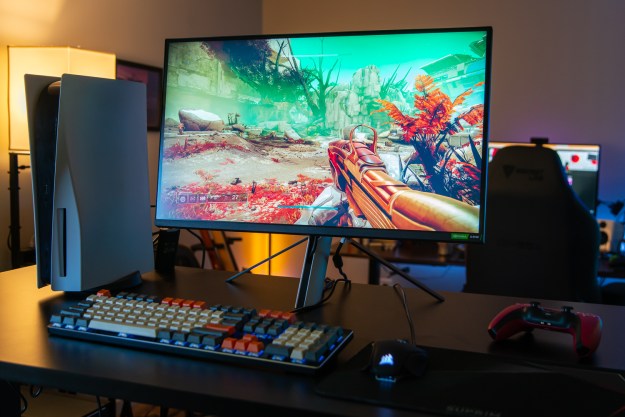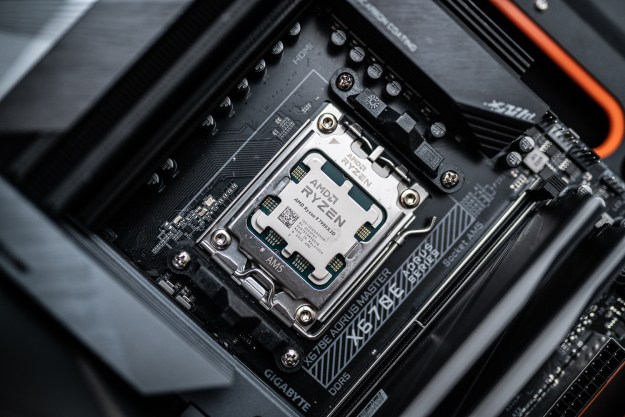On Monday, Intel responded to AMD’s CES 2020 keynote by hinting at products that it didn’t seem quite ready to announce. The company initially spent a good chunk of its keynote talking about data and how to process it all on the data center end. Standard fare for Intel keynotes. Intel then dedicated the keynote’s second half to present products we may not even see this year.
First, the company offered a taste of its upcoming discrete graphics chip, the DG1. Vice President of Intel Architecture Graphics and Software Lisa Pearce waited until the end of Intel’s keynote to tease “one more thing.” The upcoming chip resided in a laptop running Destiny 2. Both Pearce and Gregory Bryant, however, warned that they were “taking risks” by showing GPU performance in “the early days.”

“Even though you can see that it’s early, we’re extremely excited about the gaming experience we’ll see on the DG1,” Pearce said.
Showcasing a discrete graphics chip inside a laptop likely wasn’t ideal for a good first impression. Granted they showcased Destiny 2 running on a laptop, the game suffered noticeable frame drops. Typically, we see Nvidia and AMD cramming a new GPU into a desktop to dial up the resolution and effects. That wasn’t the case here.
Since DG1 is apparently in its early stages, PC gamers may not see the discrete GPU until the end of 2020. Unfortunately, Pearce and Bryant offered no additional details during the keynote. Consider yourself teased.
Next, Intel’s 10nm++ “Tiger Lake” made an appearance inside a prototype foldable device. Dubbed as “Horseshoe Fold,” the device had the footprint of a 13-inch ultrabook but opened to create a 17-inch OLED display.

Intel’s Tiger Lake is meant to succeed its current Ice Lake family for laptops, which has yet to roll out mid-range and low-end chips. Intel confirmed that Tiger Lake includes integrated Xe graphics, which we already knew. The platform also features integrated Thunderbolt 4, which wasn’t explained, and hardware acceleration, the latter of which was demonstrated by Topaz Labs. The company showed how Intel’s Tiger Lake used AI to sharpen a blurry photo.
Finally, Intel teased its tenth-generation Comet Lake-H laptop processors. This family will have up to eight cores and 16 threads. Even more, Intel claims that certain Core i7 parts will reach 5GHz while Core i9 chips will supposedly clock even higher. Comet Lake-H is based on a refined Coffee Lake architecture using the 14nm++ node. But again, no details and no specs.
While it’s normal for the company stay quieter until Computex, the quick teases and lack of solid announcements at Intel’s press conferences this year was noticeable. Intel clearly felt the need to reassure everyone it had some irons in the fire, despite not being quite ready to give them a proper unveiling.
By contrast, AMD went into CES 2020 with guns blazing. The company introduced its Ryzen 4000 mobile CPUs, its massive Threadripper 3990X HEDT part, and the Radeon RX 5600 XT graphics card.
Follow our live blog for more CES news and announcements.
Editors' Recommendations
- Everything Apple didn’t announce at the September 2020 event
- AMD vs. Intel at CES 2020: Here’s how the chips fell this year
- Everything Intel announced at CES 2020: A.I., VR, and folding laptops
- Intel announces Tiger Lake processors, with double the graphics performance
- How to watch Intel’s CES 2020 press conference today and what to expect


